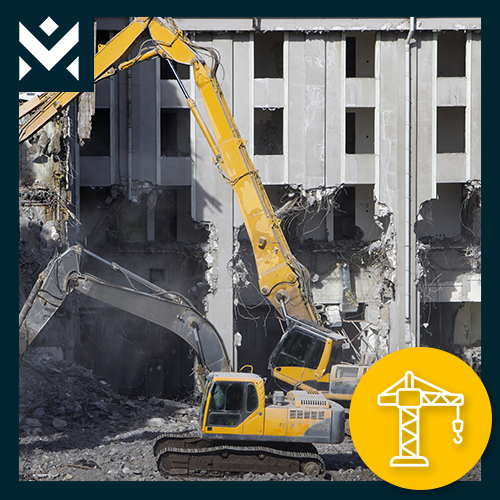Construction industry – Safe demolition without risk
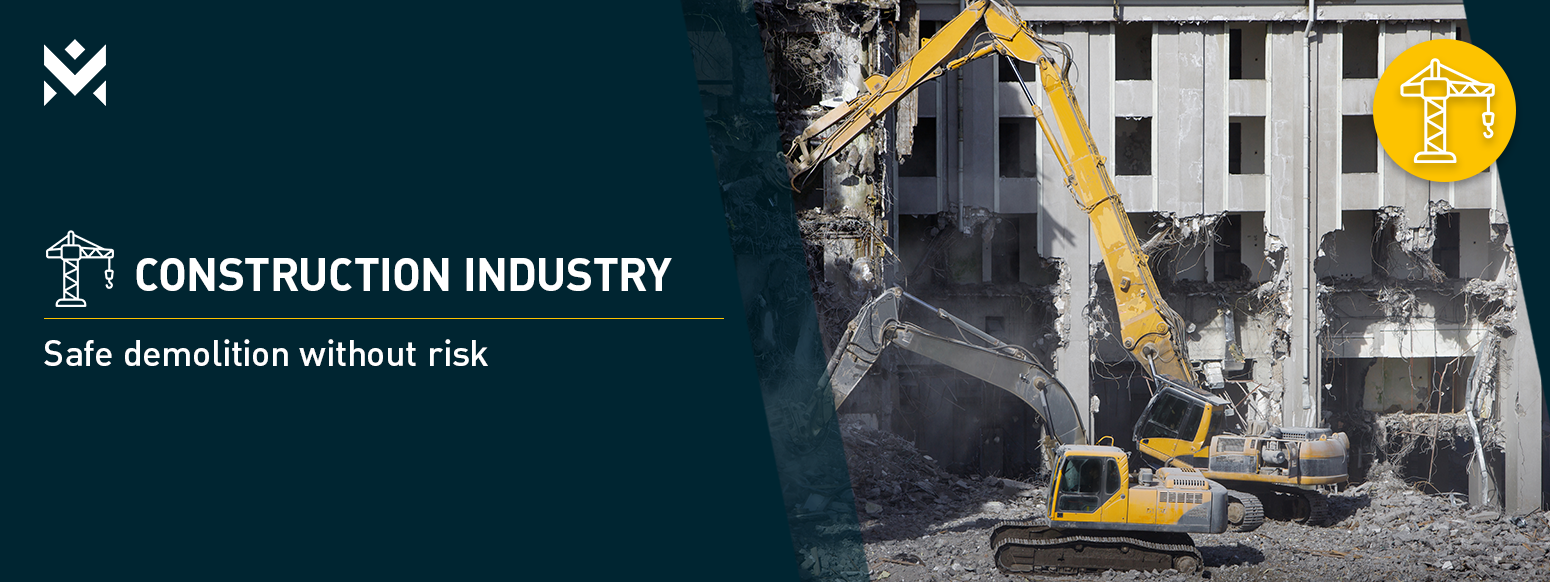
Construction industry – safe demolition without risk
When you think of demolition, you probably immediately picture a large wrecking ball smashing a building to the ground with a bang. While that image certainly captures the imagination, the reality of demolition in the construction industry is much more versatile and varied. From manual labor to controlled explosions, the world of demolition is full of surprises.
In this article, we take a closer look at several different types of demolition work, the associated risks, and provide recommendations for appropriate PPE.
What demolition jobs are there in construction?
Manual Demolition
Let’s start with the most labor-intensive form of demolition: manual demolition. This does not involve large equipment, but hammers, saws and crowbars. This method is ideal for smaller projects or situations where precision is essential, such as when removing specific parts without damaging the rest of the building. It requires skill and patience, but produces perfect work when fragile structures must be preserved.
Some risks that may occur in this work are:
- Injuries from tools: cuts and bruises from improper use of hammers and saws.
- Dust and debris: may cause respiratory problems and eye irritation.
- Noise: can cause hearing damage.
Mechanical Demolition
When large buildings or structures need to be demolished quickly, mechanical demolition is just around the corner. Using excavators, cranes and hammers, a building can be razed to the ground in no time. This method is the best choice for large demolition projects where efficiency and speed are paramount.
Some risks that may occur in this work are:
- Danger of collapse: improper use of machinery can lead to unexpected building collapse.
- Collision risk: large machines can collide with workers and other vehicles.
- Vibrations: strong vibrations from machinery can cause damage to nearby structures or pipes.
Interior Demolition (Stripping)
Sometimes a building does not need to be razed completely. Interior demolition, also known as stripping, involves removing interior walls, floors, ceilings and installations while leaving the load-bearing structure intact. This is a common method in renovations or redevelopments, where only the interior is renewed. It is a smart way to give a building a second life without the cost and waste of a complete demolition.
Some risks that may occur in this work are:
- Dust and hazardous substances: removing old materials can release dust and hazardous substances such as asbestos. Asbestos removal requires a specific step-by-step approach. Click here for the comprehensive step-by-step plan.
- Collapse hazard: removal of non-load-bearing walls or ceilings can affect the structure of the building.
- Unsafe workplace: debris and clutter can cause tripping hazards.
Selective Demolition (Deconstruction)
At a time when sustainability is becoming increasingly important, selective demolition (also known as deconstruction) is on the rise. In this process, a building is not simply taken down, but carefully demolished. Materials such as wood, metal and stone are kept separate for reuse or recycling. This method fits seamlessly with the principles of the circular economy and helps make the construction industry more environmentally friendly.
Some risks that may occur in this work are:
- Uncontrolled instability: careful removal of parts of a building can affect the stability of the structure.
- Exposure to hazardous materials: hazardous materials such as asbestos may be encountered during deconstruction.
- Fall and trip hazards: the presence of loose materials and debris can lead to falls or trips.
Appropriate PPE
In demolition work, it is crucial to use proper personal protective equipment (PPE):
- Essential PPE: Make sure employees always wear proper protective equipment such as helmets, safety glasses, hearing protection, respiratory protection, gloves and steel-toed safety shoes. These provide protection from falling debris, sharp objects, noise and other hazards common during demolition activities.
Our recommendations:
 |
 |
| OXXA® E-NATURE-GRIP 52-000 GLOVE Art. No.: 1.52.000.00 |
OXXA® E-NATURE-GRIP CUT E 52-710 GLOVE Art. No.: 1.52.710.00 |
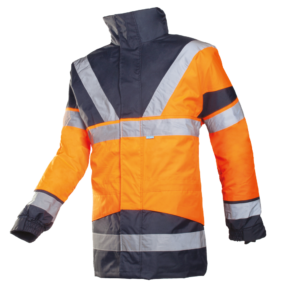 |
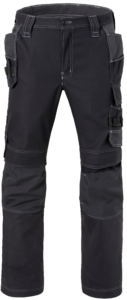 |
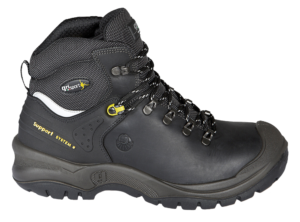 |
| SIOEN 209A SKOLLFIELD 4-IN-1 PARKA Art. No.: 2.60.552.00 |
HAVEP 80230 PANTS Art. No.: 2.27.640.00 |
GRISPORT 903L Safety shoe S3 Art. No.: 5.12.440.00 |
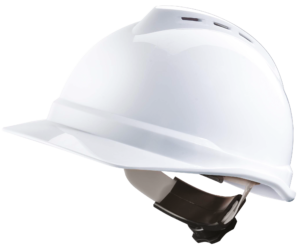 |
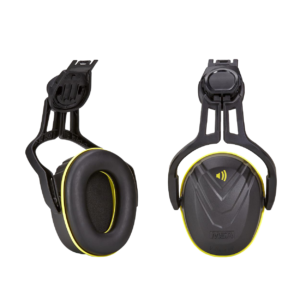 |
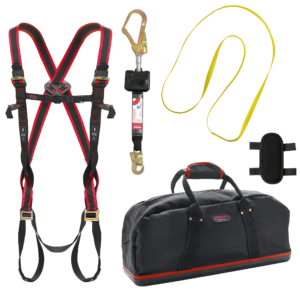 |
| MSA V-GARD 500 VENTILATED SAFETY HELMET WITH FAS-TRAC III INTERIOR Art. No.: 6.16.865.00 |
MSA V-GARD MEDIUM EAR MUFF WITH HELMET ATTACHMENT Art. No.: 3.17.131.00 |
OXXA® EVEREST 4122 CONSTRUCTION SET Art. No.: 8.84.122.00 |
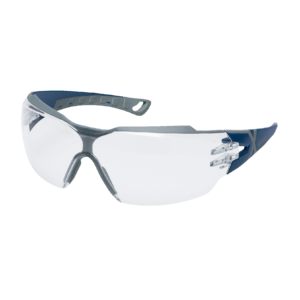 |
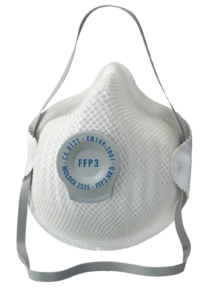 |
| uvex PHEOS CX2 9198-257 SAFETY GOGGLES Art. No.: 7.25.617.10 |
MOLDEX 255501 DUST MASK FFP3 NR D WITH EXHALATION VALVE Art. No.: 4.82.555.00 |
- Training: Ensure employees are trained in the proper use of PPE.
- Inspection: Check regularly for wear or damage.
Need help?
Would you like advice or additional information on suitable products for use in the construction industry? Contact us today on T. +31 (0)181 47 50 00. Our enthusiastic team will be happy to tell you more!


